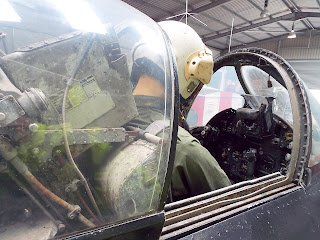Tuesday's Royal Visit
Yesterday was a hive of industry preparing for the Royal visit on Tuesday. If it didn't move then it was polished or painted. All the grass was cut and strimmed for extra neat edges. New signs went up to replace old ones that had seen far better days. As the weather had turned from sweltering to normal, grey and threatening to rain, it was a very busy day for visitors. Normally Fridays are quiet as holiday makers either leave for home, or don't go far as they have to pack to leave the next day. But as it wasn't beach weather they all seemed to pay a visit to the museum. A reminder for any of you that can come on Tuesday that car parking will be on Davidstow airfield with our complimentary shuttle bus, Marlene, taking you to and from the museum at regular intervals. There will be clear signs pointing to where you should go to park, and a volunteer will be at the end of the museum drive to point you in the right direction. If you specifically wish to see Princess Alex...


